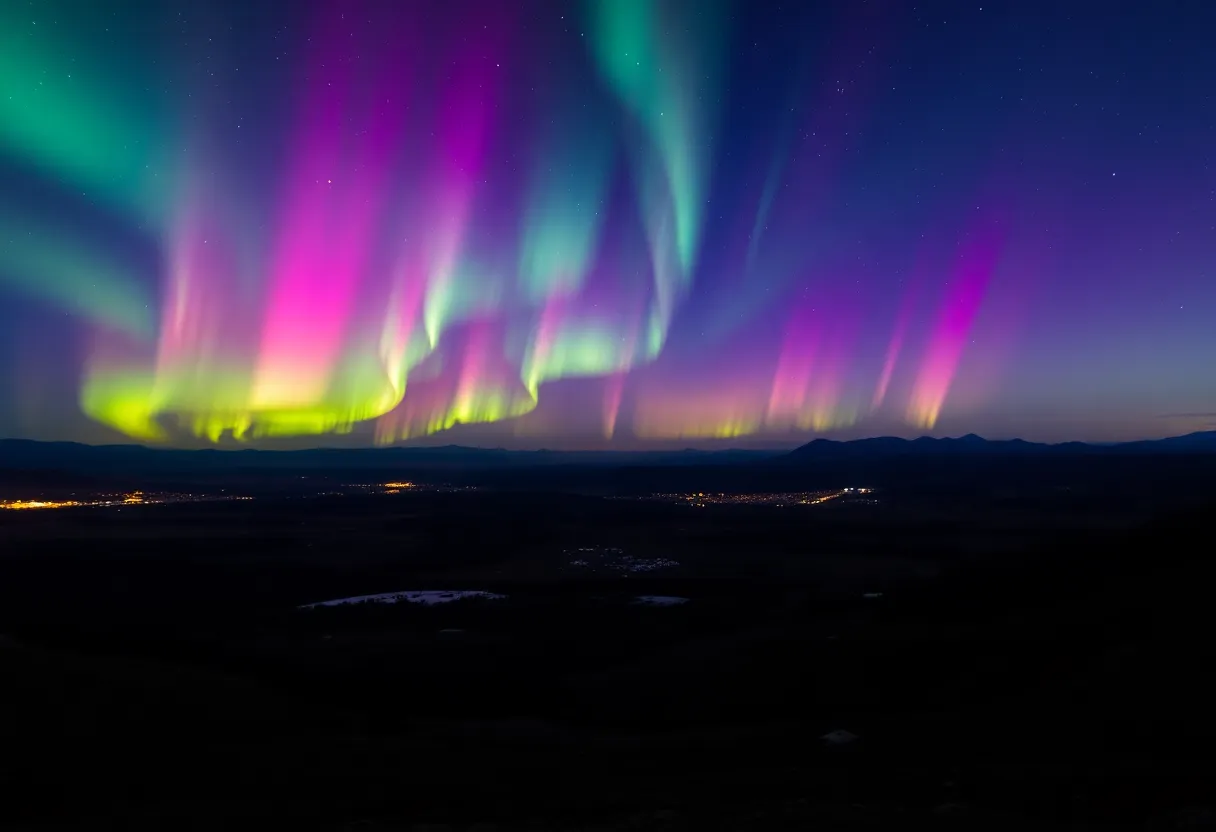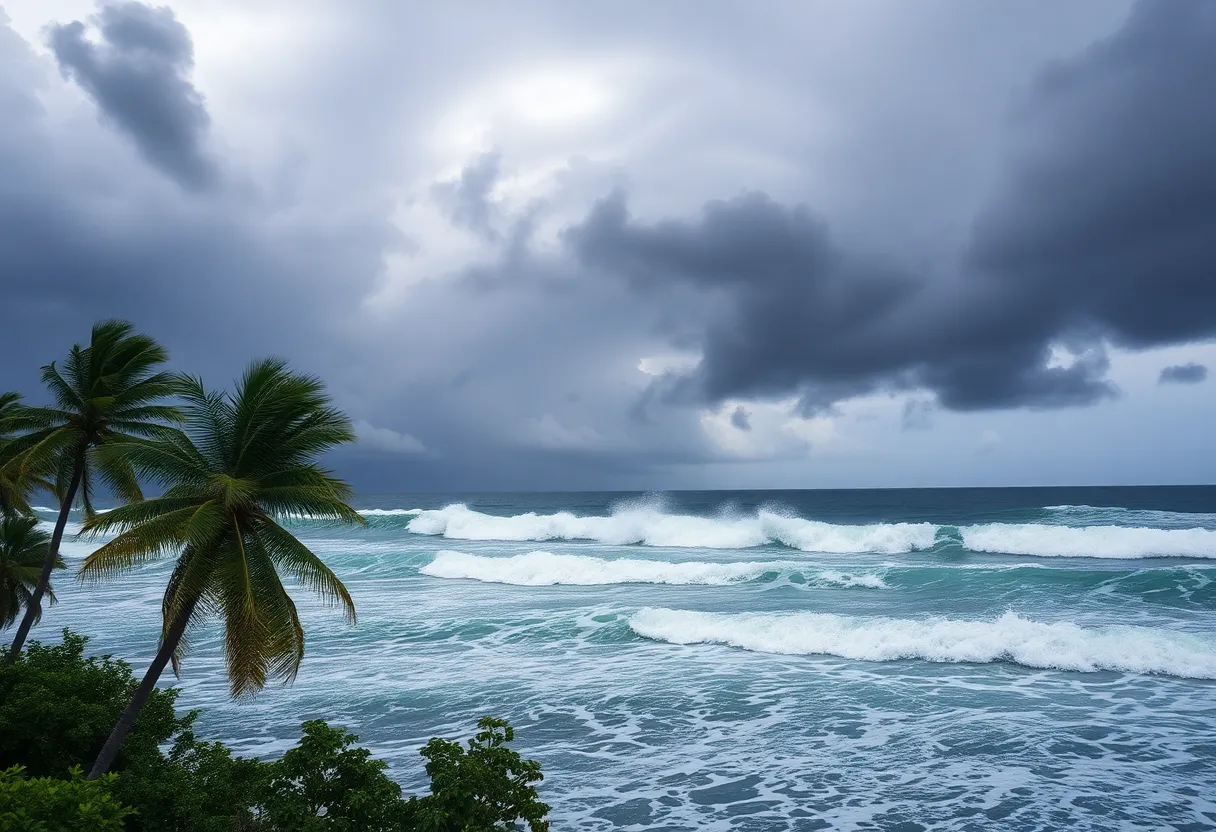News Summary
This Monday night, many across the United States may have the opportunity to witness a spectacular display of northern lights, or auroras. Following recent solar activity and a coronal mass ejection, scientists have issued a severe solar storm alert, prompting excitement among sky watchers. While rural locations in Alaska are prime spots, states from Washington to New York are included in the potential viewing area. Enthusiasts are encouraged to find dark locations for the best experience, ensuring optimal viewing conditions for this natural wonder.
Exciting News: Northern Lights May Dazzle Across the U.S.!
Brace yourselves because this Monday night, the northern lights, also known as auroras, could put on a spectacular show for many across the United States! Thanks to some recent solar activity, enthusiasts and night-sky watchers will have the chance to witness this breathtaking natural wonder.
What’s Going On with the Sun?
Last week, a significant coronal mass ejection came from the sun, which has prompted scientists to issue a severe solar storm alert. While the storm isn’t as intense as last year’s record-breaking events, it still has enough oomph to be exciting! Just yesterday, officials announced they are monitoring another solar storm that’s heading toward Earth. This means even further opportunities to catch a glimpse of the glorious auroras.
Where Can You See the Northern Lights?
So, where should you set your sights? Areas in rural parts of Alaska will definitely be in the action, but that’s not all! Expect to see the northern lights playing in the skies over states like:
- Washington
- Montana
- North Dakota
- South Dakota
- Minnesota
- Michigan
- Wisconsin
- Maine
- Idaho
- Wyoming
- Iowa
- New York
- Vermont
- New Hampshire
This wide range means that many folks should keep their eyes to the sky, especially in the northern regions of these states!
What Happened Over the Weekend?
If you were tuned in to the news this past weekend, you might have heard about the earlier solar storms. These storms caused some temporary hiccups in high-frequency radio communications. Thankfully, experts believe the worst is over, and the upcoming solar storm is likely to enhance your chances of seeing those beautiful colors in the night sky.
Understanding Solar Storms and Their Effects
The reason behind these stunning displays is that the sun is currently in the maximum phase of its 11-year activity cycle, which leads to frequent and vibrant auroras. To give you a bit of historical context, some past solar storms have allowed auroras to be seen even as far south as Hawaii! Just imagine seeing those colorful lights right from your backyard.
However, it’s good to be aware that solar storms can also bring about some challenges—like disruptions to power grids, air traffic control radio signals, and satellites. While experts can’t predict solar storms far in advance, they can provide alerts just a few days ahead of when an event might happen.
Getting Ready for Aurora Viewing
If you’re keen to catch the northern lights, there are a few tips to make your experience better. For one, steer clear of city lights. The best viewing spots are often found in dark, quiet locations like local or national parks. And don’t forget to check the weather conditions! Cloudy skies can ruin your view. Remember, sometimes, with a little help from your smartphone camera, you might capture details of the auroras that your own eyes might miss!
What’s Next?
Experts expect that solar activity will continue to ramp up until at least the end of 2025. So, if Monday night’s display doesn’t go according to plan, fret not! There will be plenty more opportunities to marvel at this cosmic light show in the near future. For the latest forecasts and information on when to look up, you can find updates through various aurora forecast apps or on the NOAA’s Space Weather Prediction Center website.
So, grab a blanket, head outdoors, and keep your fingers crossed that the northern lights put on a dazzling performance this Monday night!
Deeper Dive: News & Info About This Topic
- WJBF: Tech Tip for Capturing Northern Lights
- Wikipedia: Aurora Borealis
- The Morning Call: Northern Lights in 2025
- Google Search: Northern Lights
- Travel and Tour World: Europe’s Top Travel Destinations
- Encyclopedia Britannica: Solar Storm
- Lonely Planet: Guide to Estonia
- The Baltic Times: New High-Rise in Tallinn

Author: STAFF HERE PETERSBURG WRITER
The ST PETERSBURG STAFF WRITER represents the experienced team at HEREStPetersburg.com, your go-to source for actionable local news and information in St Petersburg, Pinellas County, and beyond. Specializing in "news you can use," we cover essential topics like product reviews for personal and business needs, local business directories, politics, real estate trends, neighborhood insights, and state news affecting the area—with deep expertise drawn from years of dedicated reporting and strong community input, including local press releases and business updates. We deliver top reporting on high-value events such as Grand Prix of St. Petersburg, Localtopia, and SHINE Mural Festival. Our coverage extends to key organizations like the St. Petersburg Area Chamber of Commerce and St. Pete Downtown Partnership, plus leading businesses in finance, manufacturing, and healthcare that power the local economy such as Raymond James Financial, Jabil, and Bayfront Health St. Petersburg. As part of the broader HERE network, including HEREJacksonville.com, HEREOrlando.com, HERETallahassee.com, and HERETampa.com, we provide comprehensive, credible insights into Florida's dynamic landscape.





